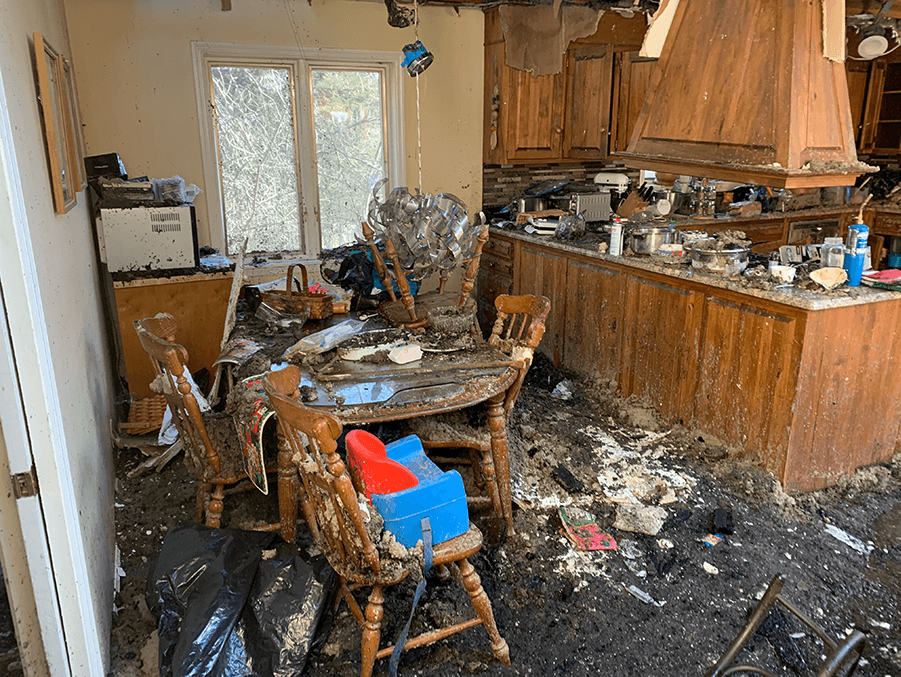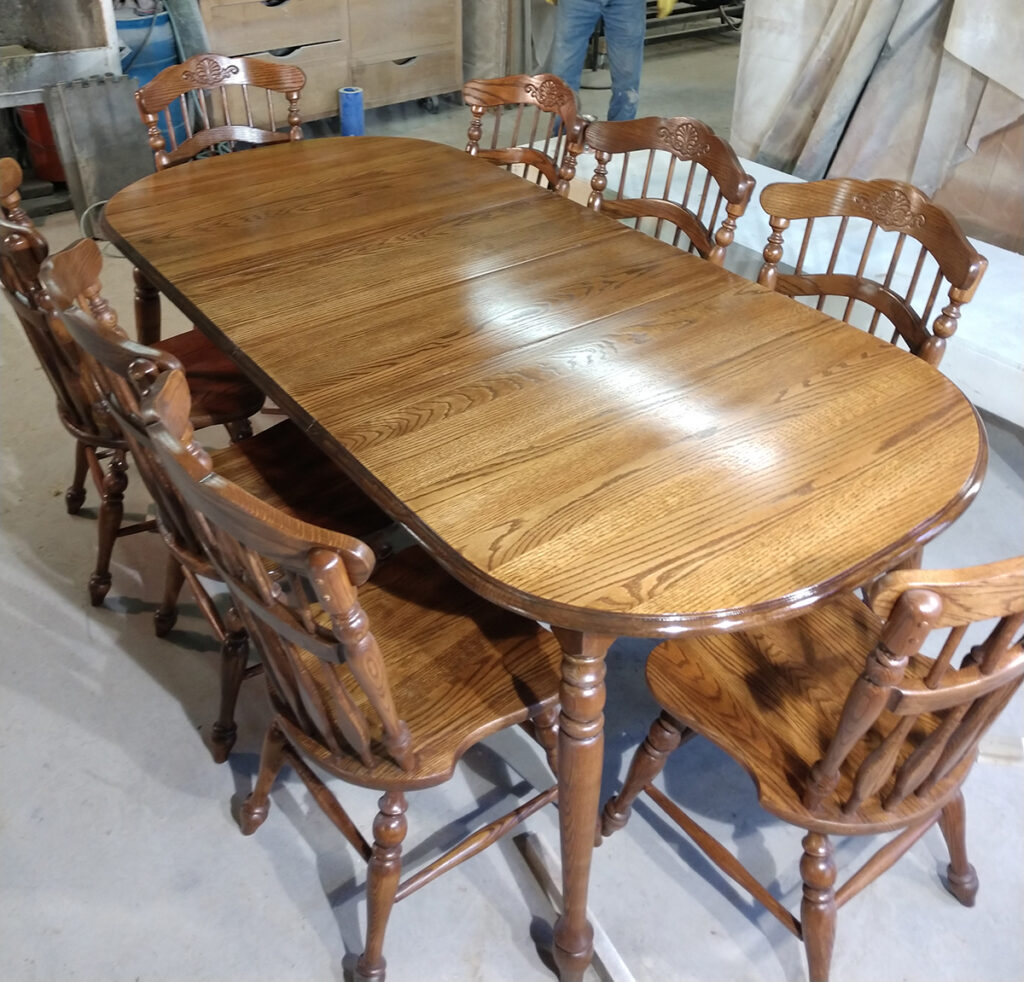Furniture Repair: Fire & Water Damage
This dining room set was nearly ruined in a house fire.

Fire and Water Damaged Furniture
When we received this dining table and chairs from the restoration crew, one end of the table was broken off by the collapse of a water soaked ceiling and insulation. Three of the chairs were so water damaged that the seats fell apart into multiple pieces. Water had literally washed/soaked away about a third of the finishes on this dining set. The baby chair had a leg burned black at the lower end. It was in rough shape.
Refinishing this dining set, however, is exactly the kind of challenge we enjoy! There is always something satisfying about being able to strip and refinish a large dining table. The transformation is pretty fun to see.
Refinishing and Repair Techniques
The chair seats were broken into several pieces and had to be re-glued, sanded smooth, and refinished.
One chair had a rung missing so I had our favorite wood turner custom make one to match the existing rungs. We installed the new custom rung and when the project was complete you would never know one rung had been replaced.
Once we get to spraying the professional finish on table tops, one of the things I like to do to make the finish shine is to spray on two or three coats of sanding sealer, instead of just one coat, before I apply any top clear coats. Sanding sealer in multiple layers gives the table top finish some nice depth.
In the end this restored and refinished dining set turned out great, and should be good for a few decades or at least until the next house fire.


